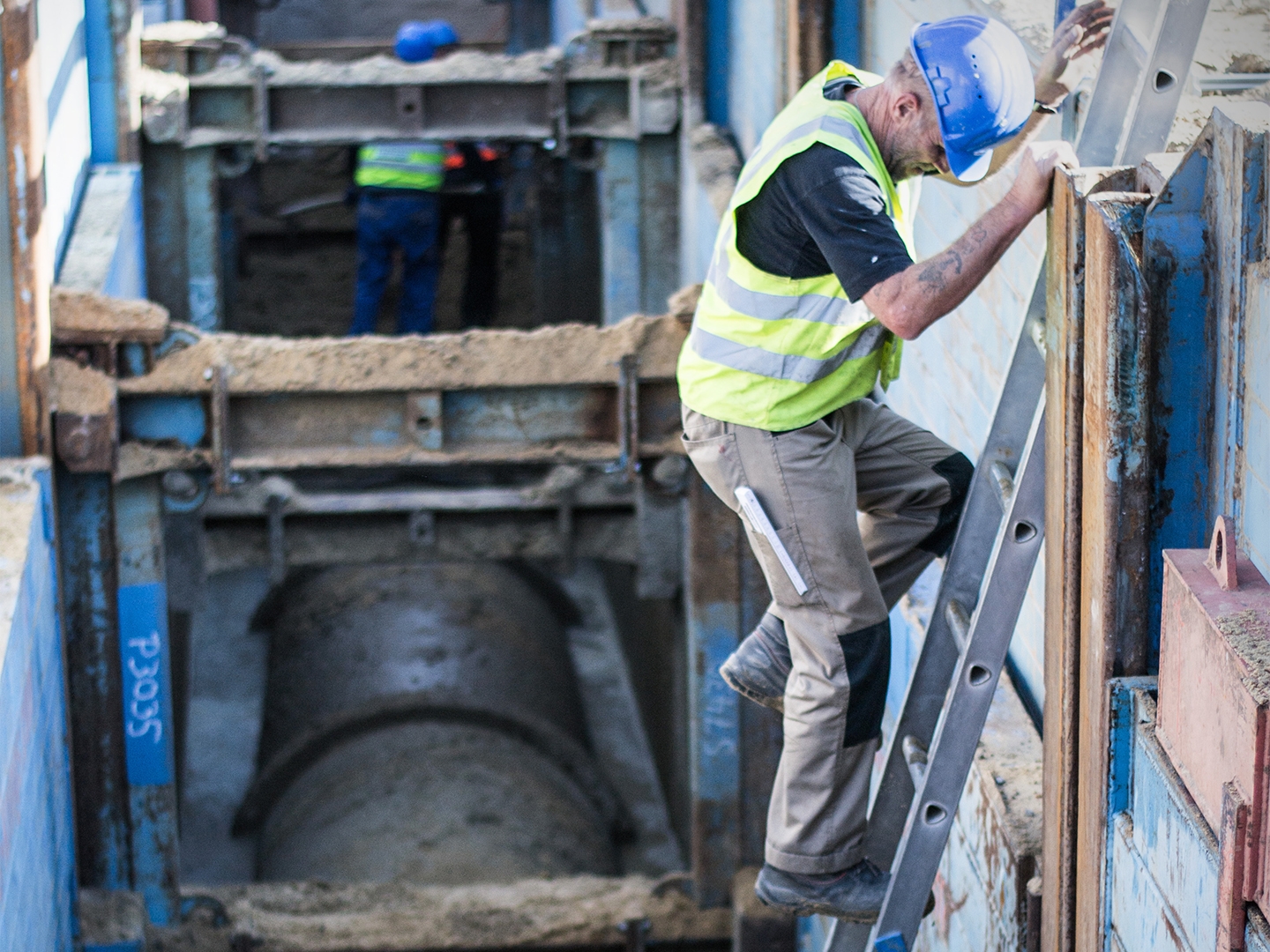LCA
Which is ecologically better: concrete or plastic pipes?
On behalf of the FBS (Federal Association of Concrete Sewer Systems), Fraunhofer UMSICHT prepared a life cycle assessment of the environmental impact of wastewater pipes made of (steel) concrete. This also functions as an association environmental product declaration (EPD-Environmental Product Declaration) and is publicly accessible via the ÖKOBAUDAT database. In addition, Fraunhofer UMSICHT compared the environmental impacts from the extraction of raw materials to the recycling of drainage systems made of (steel) concrete with pipelines made of plastic.

In the comparative life cycle assessment, the researchers at Fraunhofer UMSICHT determined the carbon footprint of wastewater pipes made of (steel) concrete and four types of plastic (GRP, PVC, PE, PP)* across all available diameter sizes. For the material comparison, commercial and publicly available environmental data of various materials were used for a defined diameter and related to a service life of 100 years.
In the life cycle assessment, the researchers took into account the energy and resource consumption for the production, installation and use phases, including the recycling of sewer pipes. The data basis for concrete and reinforced concrete pipes was collected by Fraunhofer UMSICHT as a neutral institution from the members of the Federal Association of Concrete Sewer Systems. Further background data comes from the "LCA for Experts" database and relates to production volumes from 2021.
Carbon footprint of concrete pipes more advantageous
The results of the life cycle assessment for a cradle-to-gate scenario (from raw material extraction to the factory gate) show: While the difference between the materials in the small nominal diameter range of 300 mm inner diameter is only slight, concrete pipes are more advantageous than plastic alternatives from a nominal diameter² of 400 mm inner diameter. Concrete pipes also show advantages in the carbon footprint compared to reinforced concrete pipes, although no differences in the service life of the two materials have been taken into account. If the disposal of the pipes is also taken into account, concrete and reinforced concrete pipes show clear advantages over plastic pipes. "This is because plastic pipes can presumably only be thermally recycled - i.e. incinerated. Concrete pipes could be used in part for the production of new precast concrete parts and as crushed material, for example in road construction," explains Dr. Daniel Maga from the Sustainability and Participation department at Fraunhofer UMSICHT. After the concrete is reused, it is carbonated so that additional CO2 is bound. However, this effect was not taken into account due to the uncertainty of the data.
The environmental product declaration underwent an external audit by the Institute for Testing and Certification of Construction Products, Safety Technology and Protective Equipment ift in Rosenheim.
1 Glass fiber reinforced plastic, polyvinyl chloride, polyethylene, polypropylene
² Approximate inner diameter of a pipe
Last modified:
 Fraunhofer Institute for Environmental, Safety and Energy Technology UMSICHT
Fraunhofer Institute for Environmental, Safety and Energy Technology UMSICHT